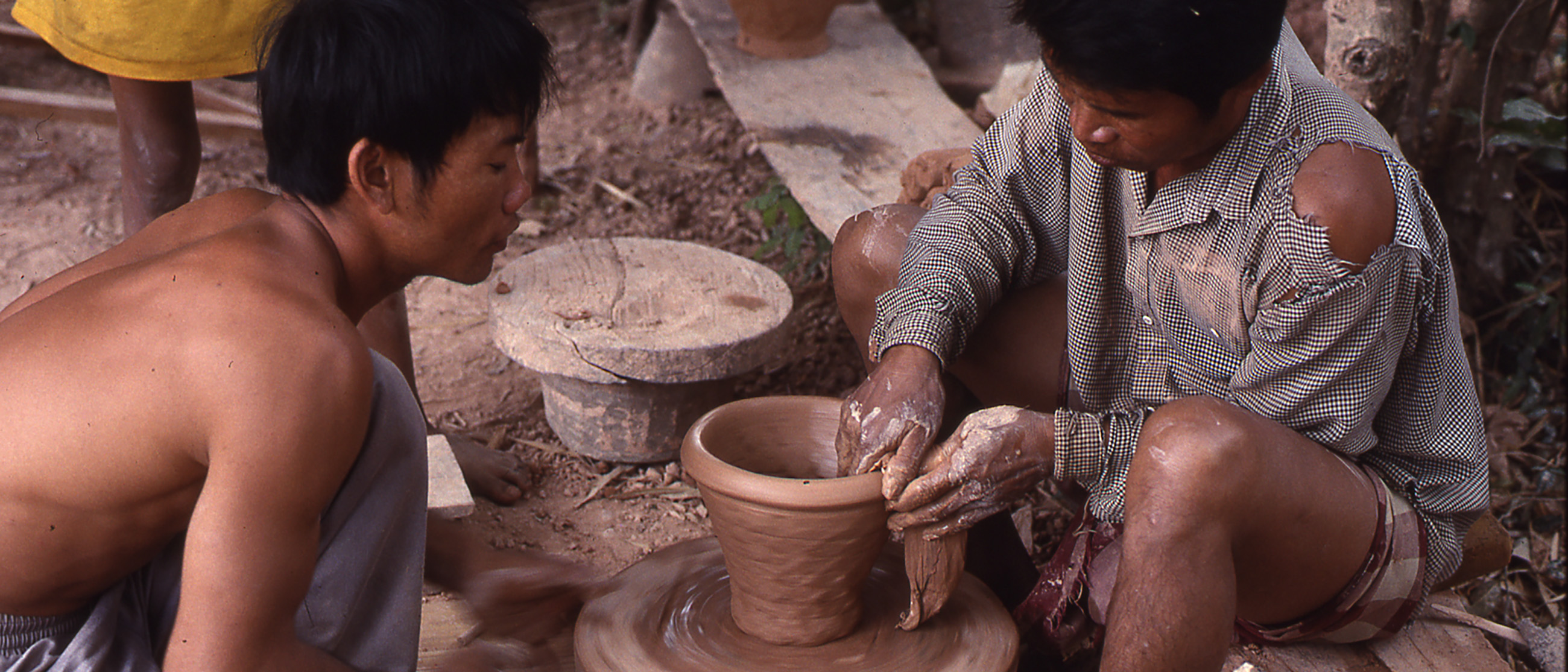
Materials are the fingerprints of ceramics. Whether perceived by glance and touch or disclosed by scientific analysis, they identify the product of a particular place (and, perhaps, of a particular time) and distinguish superficially similar wares from one another. Style refers to the adoption of a certain shape or mode of decoration; it is the most fickle of identifiers, as it can change rapidly in response to new ideas introduced by ceramics from another region or from overseas. Imported vessels brought to Southeast Asia from South Asia, West Asia, or China provided repeated inspirations for new shapes, glazes, and decoration. Especially during the heyday of international trade in the fourteenth through seventeenth centuries, Chinese ceramics in particular offered incentives to improve materials processing. Meanwhile, the fundamental continuity of materials provided a local "flavor" (terroir) of production.
Mainland Southeast Asia is distinguished by the ongoing complementary coexistence of two major ceramic traditions-earthenware and stoneware. Earthenware has been produced in the region for more than eight thousand years, and archaeologists are still probing its age and distribution. Stoneware production has continued for some two thousand years since its first introduction to northern Vietnam. These two basic types of clay bodies have been at the centers of developing systems of technology, including the processing, amending, and forming of the clay body; the use of resins , pigments, slips, and glazes; and the development of firing procedures and kilns.
In the pre-industrial world of Mainland Southeast Asia, as elsewhere, ceramic production developed and thrived at sites where the necessary raw materials-notably clay-were available. Clay suitable for making earthenware is widely obtainable, as reflected by the numerous and broadly dispersed village-associated sites still making earthenware today. Clay with properties necessary for firing stoneware is harder to come by, and historical sites of stoneware production clustered around clay sources. Their frequent locations along rivers-for the immediate convenience of building kilns in the riverbanks and sending wares to market by boat-enabled them to bring supplies from more distant sources and therefore continue operating in one place after local clay and firewood had been exhausted.
In Southeast Asian villages, women make earthenware, and they can carry out all the steps of production near their homes (including firing) and integrate them into other household responsibilities. Men typically make stoneware, using workshops and kilns often located outside the village. (In North and Central Vietnam, however, women actively engage in stoneware production in small factory settings.) Most women and men who make pots in villages are also farmers. Rice, the main crop, is grown during the monsoon months of May through October and harvested in November and December. The dry season, from the harvest until the return of rains, is reserved for making and selling pots.